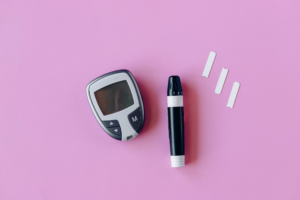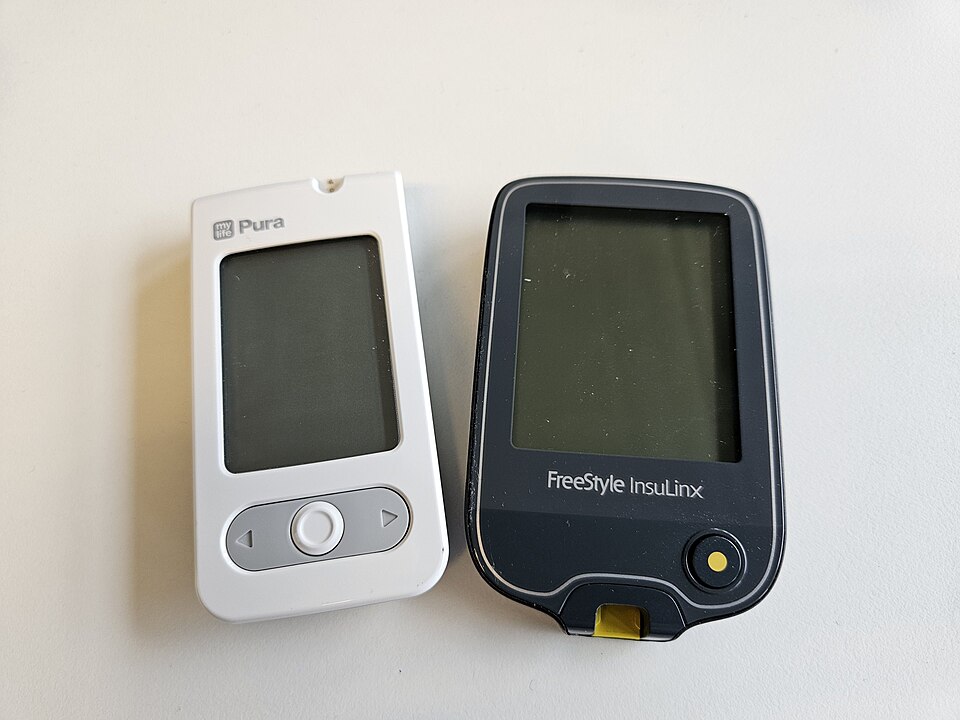How Much Alpha-Lipoic Acid Should You Take a Day?
You’re standing in the supplement aisle, staring at a bottle of alpha-lipoic acid. The label says 600 mg. But is that the right amount for you?
Don’t worry. You’re not alone in this confusion. Most people struggle with supplement dosing.
So what’s the real answer? Let’s break it down into simple, science-backed recommendations.
What Is Alpha-Lipoic Acid?

Your body makes this powerful antioxidant naturally. It’s found in every cell you have.
Then, what makes it special? Alpha-lipoic acid works in both water and fat.
Most antioxidants can’t do this. Vitamin C only works in water. Plus, vitamin E only works in fat.
Because of this unique trait, alpha-lipoic acid protects your cells everywhere. It helps turn food into energy too.
You can find small amounts in foods like spinach, broccoli, and red meat. Still, food sources don’t give you therapeutic amounts.
That’s where supplements come in. Now, let’s talk about how much you should take.
The Standard Alpha-Lipoic Acid Dosage
Research shows a clear pattern. Most studies use 300 to 600 mg per day.
For example, one major review found that 600 mg daily works well. This dose helped with diabetic nerve pain after just three weeks.
But what if you want to use alpha-lipoic acid for natural diabetes support? The same dosage applies.
Some research trials tested higher doses. They went up to 1,800 mg daily.
Still, these higher amounts didn’t work better. So why take more than you need?
Starting Dose for Beginners
If you’re new to alpha-lipoic acid, start lower. Try 200 to 300 mg per day.
Then, watch how your body responds. You can increase the dose after a few weeks.
This approach helps you avoid side effects. Plus, it lets you find your ideal amount.
Alpha-Lipoic Acid Benefits: Why People Take It
Now you might wonder what this supplement actually does. Let’s explore the proven benefits.
Blood Sugar Support

Alpha-lipoic acid helps your body use insulin better. This means your cells can absorb sugar more easily.
One analysis looked at multiple studies. It found that alpha-lipoic acid lowered blood sugar levels.
The supplement also reduced insulin resistance. Because of this, it’s popular for metabolic health.
Nerve Pain Relief
This is where alpha-lipoic acid really shines. European doctors have used it for decades.
It helps with diabetic neuropathy symptoms. These include burning, tingling, and numbness in your hands and feet.
So how does it work? The antioxidant protects your nerve tissue from damage.
Plus, it improves blood flow to your nerves. This combination reduces pain and improves function.
Powerful Antioxidant Protection
Free radicals damage your cells every day. Alpha-lipoic acid fights these harmful molecules.
But here’s something amazing. It also reactivates other antioxidants after they’re used up.
This means it helps vitamins C and E work again. It’s like recycling your antioxidants.
Weight Management Support
Some studies suggest alpha-lipoic acid might help with weight loss. However, the effects are modest.
One review found people lost about 1.5 pounds more than those taking a placebo. The study lasted 14 weeks on average.
Still, don’t expect dramatic weight loss. Think of it as a helpful addition to diet and exercise.
Dosage Based on Your Health Goals
Different health concerns might need different amounts. So let’s break it down by purpose.
| Health Goal | Recommended Daily Dose | Duration |
|---|---|---|
| General Antioxidant Support | 200-300 mg | Ongoing |
| Blood Sugar Management | 300-600 mg | 3-6 months minimum |
| Diabetic Neuropathy | 600 mg | At least 3 weeks |
| Weight Management | 300-600 mg | 12-14 weeks |
Notice how 600 mg appears most often? That’s because research shows it’s the sweet spot.
Also, you can split your dose. Take 300 mg twice daily instead of 600 mg at once.
When Should You Take Alpha-Lipoic Acid?

Timing matters for supplement absorption. So when’s the best time?
Take alpha-lipoic acid on an empty stomach. This means at least 30 minutes before eating.
Because food can lower absorption by up to 30%. You want to get the most from your supplement.
Best Times to Take Alpha-Lipoic Acid:
However, if you get stomach upset, try taking it with a small amount of food. A little protein or fat is okay.
Safety and Side Effects
Alpha-lipoic acid is generally safe. Most people don’t experience any problems.
But like any supplement, it can cause side effects. Let’s talk about what to watch for.
Common Side Effects
These mild issues affect some people. They usually go away on their own.
Possible Minor Side Effects:
- Headache
- Mild nausea
- Skin rash
- Heartburn
- Stomach discomfort
If these happen, try lowering your dose. Then, you can slowly increase it over time.
Important Safety Warnings
Now, why is this important? The supplement can lower blood sugar significantly.
So if you take diabetes medication, it might work too well. This could cause dangerous low blood sugar.
Plus, it may affect thyroid hormone levels. Your doctor might need to adjust your medications.
Maximum Safe Dose
Studies show doses up to 2,400 mg daily are safe. Still, there’s no benefit to going that high.
In fact, very high doses might cause liver problems. Stick with 600 mg or less.
Also, stop taking alpha-lipoic acid two weeks before surgery. It can affect blood sugar control during procedures.
Getting Alpha-Lipoic Acid from Food

You can find this antioxidant in various foods. However, amounts are quite small.
For example, spinach contains alpha-lipoic acid. But you’d need to eat pounds of it daily.
Best Food Sources
These foods contain the highest amounts naturally. Still, supplement levels are much higher.
- Red meat (especially organ meats like liver and kidneys)
- Spinach
- Broccoli
- Brussels sprouts
- Tomatoes
- Beets
- Potatoes
- Carrots
- Rice bran
So should you eat these foods? Absolutely! They provide other important nutrients too.
But don’t rely on them for therapeutic doses. That’s what supplements are for.
Choosing the Right Alpha-Lipoic Acid Supplement
Not all supplements are created equal. Here’s what to look for when shopping.
R-Alpha-Lipoic Acid vs. Regular Form
Alpha-lipoic acid comes in two forms. The R-form is natural and more bioavailable.
Your body uses it more efficiently. This means you might need a lower dose.
However, R-alpha-lipoic acid costs more. The regular form works well too.
Quality Markers
Look for these signs of a good supplement:
- Third-party testing certification
- Clear dosage information
- No unnecessary fillers or additives
- GMP (Good Manufacturing Practice) certification
- USP or NSF verification
These certifications mean the product contains what it claims. Plus, it’s free from contaminants.
How Long Until You See Results?
This depends on why you’re taking it. But most people notice changes within weeks.
For nerve pain, improvements appear in 3 to 5 weeks. Blood sugar benefits take a bit longer.
However, you might need 2 to 3 months for full effects. So don’t give up too soon.
Also, remember that consistency matters. Take your supplement every day for best results.
Can You Take Too Much Alpha-Lipoic Acid?
Yes, but it’s hard to reach toxic levels. The body tolerates this supplement well.
One study found problems only at extremely high doses. We’re talking about 121 mg per kilogram of body weight.
For a 150-pound person, that’s over 8,000 mg daily. Way more than anyone should take.
Still, stick with recommended amounts. More isn’t better with alpha-lipoic acid.
Combining Alpha-Lipoic Acid with Other Supplements
This antioxidant works well with other nutrients. Some combinations are especially powerful.
Synergistic Pairings
These supplements enhance each other’s effects. Plus, they support similar health goals.
- L-Carnitine: Both support energy metabolism and mitochondrial function
- Vitamin C and E: Alpha-lipoic acid helps recycle these antioxidants
- B Vitamins: Work together for nerve health and energy production
- Chromium: Both support healthy blood sugar levels
However, always space out your supplements. Don’t take everything at once.
Also, check with your doctor before combining supplements. Some might interact with medications.
Special Considerations for Different Groups
Certain people need to be extra careful with alpha-lipoic acid. Let’s review who and why.
People with Diabetes
If you have diabetes, this supplement can help. But you need medical supervision.
Because it lowers blood sugar, your medication doses might need adjustment. Monitor your blood sugar levels closely at first.
Then, work with your doctor to find the right balance. Never stop diabetes medications without medical guidance.
Pregnant and Nursing Women
Research on pregnancy safety is limited. Some studies suggest it’s safe up to 600 mg daily.
Still, most experts recommend avoiding it during pregnancy. We simply don’t have enough data yet.
The same goes for breastfeeding. Better safe than sorry in these situations.
Thyroid Conditions
Alpha-lipoic acid might affect thyroid hormone levels. If you have thyroid disease, talk to your doctor first.
They can monitor your hormone levels regularly. Plus, they might adjust your thyroid medication.
Practical Tips for Taking Alpha-Lipoic Acid
Now you know the dosage. But here are some tips to make it work better.
Getting the Most from Your Supplement:
Signs Your Dose Might Need Adjusting
Sometimes you need to change your dosage. Watch for these signals from your body.
Dose Might Be Too High If You Experience:
- Persistent nausea or stomach upset
- Frequent headaches
- Skin rashes that don’t go away
- Blood sugar dropping too low (if you have diabetes)
If this happens, cut your dose in half. Then, see if symptoms improve.
You Might Need More If:
- You see no improvement after 8 weeks
- Your blood sugar remains high
- Nerve pain symptoms continue unchanged
However, don’t exceed 600 mg without talking to your doctor. Remember, more isn’t always better.
The Bottom Line on Alpha-Lipoic Acid Dosage
So what’s the final answer? For most people, 300 to 600 mg daily is ideal.
This range provides proven benefits without unnecessary risks. Plus, research strongly supports these amounts.
Remember to take it on an empty stomach. Give it at least 3 weeks before judging results.
Also, talk to your doctor before starting. This is especially important if you take medications or have health conditions.
The good news is that alpha-lipoic acid is generally safe and well-tolerated. Most people experience benefits without problems.
Now you have the knowledge to make an informed choice. You can confidently add this powerful antioxidant to your natural health routine.
References
- WebMD. (2025). Alpha-Lipoic Acid Benefits and Side Effects. Comprehensive review of ALA dosing, benefits, and safety.
- National Center for Biotechnology Information. (2024). Alpha-Lipoic Acid – StatPearls. Medical reference on ALA supplementation and therapeutic applications.
- Healthline. (2023). Alpha-Lipoic Acid: Weight Loss, Other Benefits, and Side Effects. Evidence-based guide to ALA supplementation.
- Examine.com. Alpha-Lipoic Acid Research Analysis. Independent analysis of ALA supplementation research.
- National Center for Biotechnology Information. Alpha-Lipoic Acid and Diabetic Neuropathy. Clinical research on ALA for nerve damage.
- University of Rochester Medical Center. Alpha Lipoic Acid Supplement Information. Medical encyclopedia entry on ALA.
- National Center for Biotechnology Information. Alpha-Lipoic Acid as an Antioxidant Strategy for Managing Neuropathic Pain. Review of ALA mechanisms for pain management.
- Drugs.com. Alpha-Lipoic Acid Dosage Guide. Professional dosing information and guidelines.
Related Articles
Continue your journey to better metabolic health with these resources:
- The Ultimate Guide to Natural Diabetes Support – Comprehensive strategies for managing blood sugar naturally
- Nutrition & Supplement Strategy: Anti-Inflammatory Foods
About the Author
The Remedy Verified Team translates complex metabolic science into clear, practical strategies for everyday health.
Medical Disclaimer
This article is for informational purposes only and does not constitute medical advice. Always consult with a qualified healthcare professional before starting any new supplement, especially if you have existing health conditions or take medications. The information provided here should not replace professional medical guidance. Individual results may vary, and what works for one person may not work for another. Alpha-lipoic acid can interact with diabetes medications, thyroid drugs, and other treatments, so medical supervision is essential.



